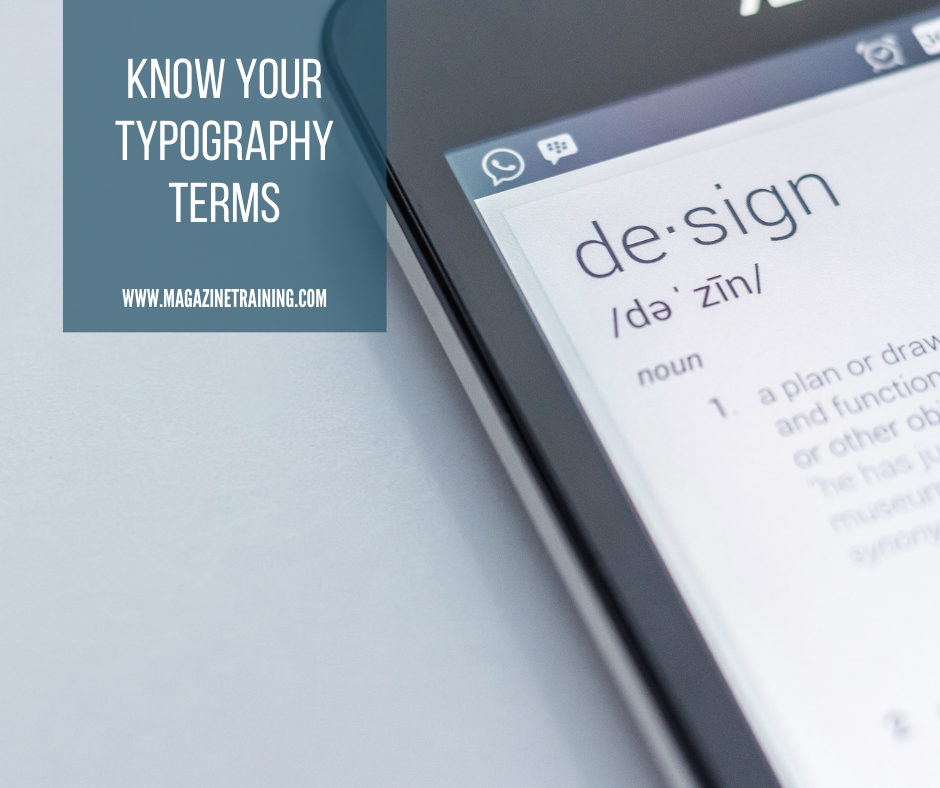
Ever have trouble communicating with others regarding typography? Use these key terms to pave the way to better understanding.
- ascender – The part of a lower-case letter that extends above the x-height.
- baseline – The invisible line on which the letters rest.
- boldface – A heavier version of the normal weight of a typeface.
- centered – A typographic arrangement in which type appears in the center of a defined space.
- characters – Individual letters or numbers.
- condensed – A narrower version of the normal width of a typeface.
- descender – The part of a lower-case letter that extends below the x-height.
- drop cap – An enlarged initial letter that extends below the first base line of body text. A drop cap should be base aligned with one of the text’s base lines.
- font – One design of a particular typeface. It includes all of the designed characters such as numerals and punctuation.
- initial cap – A larger letter at the beginning of a block of text. An initial cap may be a drop cap, or it may sit on the first line of text.
- italic – Type in which the letters are slanted to the right and drawn to suggest handwriting.
- justified type – Lines of type that are flush on both the left and right edges.
- kern – To tighten the space between letterforms to achieve optically-consistent letter spacing.
- letter spacing – Insertion of space between the letters of a word to improve the appearance of a line of type.
- line spacing/leading – In text, the space between the baseline of one line and the baseline of the next.
- loose lines – Lines of text with too much space between letters and words.
- point size – The size of type measured from the top of the ascenders to the bottom of the descenders.
- ragged – Multiple lines of type set with either the left or right edge uneven.
- roman – Name often applied to the Latin alphabet as it is used in English and most other European languages. Also used to identify vertical type as distinct from italic.
- sans serif: Type without serifs. (The display text in this manual is sans serif.)
- serifs – Small strokes at the ends of the main strokes of letters. (The body text in this manual has serifs.)
- soft return – A carriage return that breaks to a new line but doesn’t start a new paragraph. In most programs, you can type a soft return by pressing the shift-return keys.
- text type – Type, usually between 6 and 14 points, used for text compositions.
- typeface – A named type design, such as Garamond, Helvetica, or Times Roman.
- type family – All the variations of a particular typeface. Type families usually consist of the basic roman, italic, and bold. Larger type families may include condensed, expanded, outlined, as well as a variety of different weights.
- typography – The style and arrangement of the headline and subhead letters on a page.
- x-height – The height of lower-case letters without ascenders and descenders. It is defined by the base line and the mean line.
Related posts
Magazine Training International’s mission is to encourage, strengthen, and provide training and resources to Christian magazine publishers as they seek to build the church and reach their societies for Christ.

